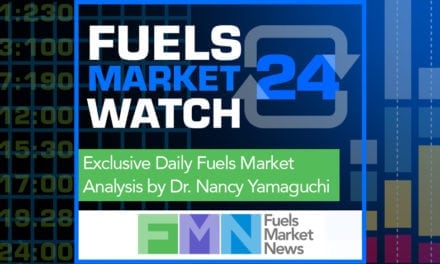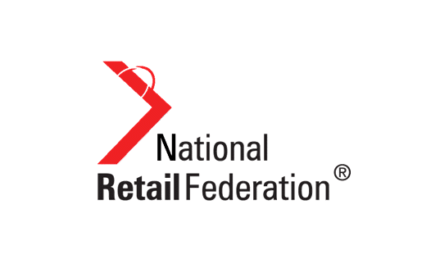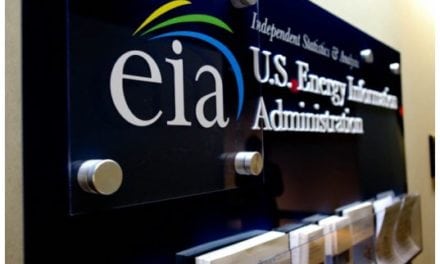FMN: I would assume that the usual antitrust concerns are present with the institute.
Eichberger: You absolutely have to comply with antitrust. You have auto companies that compete, biofuel companies that compete, refiners that compete, retailers that compete—all in the same room discussing the market. We will never talk about prices or allocation of markets or any of those things that any association has to be careful with. We talk about the bigger picture items.
Let’s say you want to bring E15 to market, what are the issues? Not what are you going to do retailer “A,” but if you were to do this what are the fundamentals? NACS has always had the objective of providing their members with options. Part of the regulatory strategy when I was in the advocacy world [Eichberger has served as NACS vice president of government relations] was knocking down barriers to innovation. Give retailers the ability to move into a new fuel market with a level playing field. Clarify the regulatory issues and give them an option and here’s what’s involved—go for it. That’s kind of the same with the Fuels Institute. All we want to do is make sure that everyone is aware and understands the challenges and opportunities that exist when looking to bring something to market.
FMN: What would be an example of that approach from the Fuels Institute perspective?
Eichberger: I like to draw a parallel between E85 and flex fuel vehicles and hydrogen. The E85 market has been around 12 to 15 years and we probably have 3,000 stations and some 17 million vehicles on the road. The problem is the vehicles don’t have to buy the product so there is no defined demand, and there also has been no coordinated marketing strategy. Here are the vehicles, here’s a newly approved fuel so let’s see what happens. There’s been a struggle with that.
With hydrogen—it’s a very nascent technology—who knows if it’s going to take off. There are some beautiful things about it and some huge hurdles. But what they’ve done is have the automakers, fuel suppliers, retailers and regulators work together to identify opportunities and challenges. They are bringing vehicles to the market where the fuel is available and building from there. It’s a very collaborative, constructive and strategic effort to bring this product to market and very much the model we should be trying to pursue elsewhere.
FMN: What are some of the surprising areas of common ground and agreement that have developed as this process approach has moved forward?
Eichberger: I think the thing that surprised me the most is the ability of people who have had some of the most aggressive differences in the public relations sphere set aside their differences and talk. From the very first meeting we’ve had some fairly sensitive issues come up, and the conversation has always been constructive.
I’ve been in politics now for 19 years and I’m pretty cynical. When I was launching the site people would come up to me and say you have no idea how difficult this is going to be—these people will not talk. They will not get along. So I actually went into it with a fairly pessimistic attitude. I owe everybody a big apology because we completely underestimated the constituents that are involved here. It is not petty. While we get into politics, and politics gets so petty so quickly, when you talk about business there is no pettiness. I think that has been the most eye-opening for me. I have lost so much of my cynicism and it’s a very uncomfortable position for me [laughs].
The other thing that I think has been extremely enlightening for me with this process is that so many people have said there is a need for this and there has been for a long time. I don’t know why nobody else has done it. Maybe it’s because the cynicism in them said it couldn’t be done. We’re now over two years years old, and people have started to understand that what we said we wanted is actually taking place. It was not a “bait and switch.” And I think that has opened up opportunities for the institute to have a much more meaningful role in the market. People are starting to really recognize who we are and want to talk to us about it. And that is pretty cool.
FMN: We touched on it a bit already, but who can be a participant in this process?
Eichberger: Anyone can be a participant. We are looking for people that have a stake in the fuels and vehicles market. As we fill the board we’re being very deliberate to make sure it’s balanced to make sure that no single stakeholder community has undue influence on the research and we’ve done a pretty good job. But in terms of the general participation we want the biggest pool we can have. We want people that have a mindset about how to make the market better, and not just tomorrow but 10 or 15 years down the road. What do we need to be thinking about to improve the delivery of products and services to the customer?
So we’re open to more marketers, retailers, automakers, fuel producers, consumer advocates, environmental advocates and government entities. We’re very diverse, and the more diverse we get the stronger we become. If there is a viewpoint that is not being presented we miss something. The last thing we want to do is publish what we consider to be a comprehensive analysis of a market issue then have somebody say you completely forgot this stakeholder’s perspective. Then we have to start over.
FMN: What do participants gain from their involvement and attending the institute’s meetings?
Eichberger: The people who have gotten engaged receive tremendous value in our conferences. It gives them the opportunity to network with people from parallel industries that would be difficult, otherwise. Even when you sit in the audience you are participating. We have presenters that speak for about one third of the time and the rest of the time is the audience sharing insight with each other and the presenters. In the room you’re going to have marketers, fuel providers, refiners, biofuel folk, natural gas advocates, electrical vehicle folk automakers, the national labs and government entities. If you have a question about anything in the industry the chances are somebody sitting next you will be able answer it. It really is the ultimate opportunity for people trying to figure out where the market is heading, and what they should be paying attention to.
We put together an agenda that is designed to prompt discussion. For example, at our next meeting in Indianapolis [Sept. 23-25] we have Reuben Sarkar, Deputy Assistant Secretary for Transportation, U.S. Department of Energy, who will talk about DOE priorities such as high-octane fuels, electric vehicles hydrogen and other projects.
In another presentation, we will take a look at a strawman strategy to bring a new fuel to market, and then tear it apart. Say it’s an E25 high-octane fuel. What do we need to be thinking about? How do we develop a coordinated strategy to be successful and satisfy the various interests of the key stakeholders?
There’s a lot more.
FMN: Thanks John.
[Click here for more details on the next Fuels Institute meeting.]









